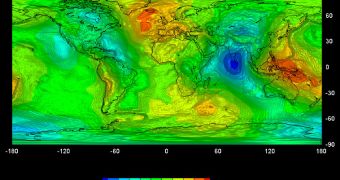The GOCE satellites of the European Space Agency (ESA) have finally been fixed, experts say. This means that downloading scientific data from the observatory is now again possible.
A significant malfunction took place on July 8, when the observatory suddenly and unexpectedly stopped downlinking the data it collected over the past few days.
The role of the Gravity field and steady-state Ocean Circulation Explorer is to create highly-detailed maps of Earth gravitational pull, which varies slightly depending on the region being considered.
Thanks to the special efforts of an expert team, the satellites are now fixed, and capable of relaying back data it collects from its peculiar, Sun-synchronous orbit.
“I often get questions from journalists as to whether ESA satellites are not over-designed, with their redundancies and long lifetimes,” says Volker Liebig
“This case shows how important it is to have these margins in case of problems. Consequently, we can now deliver scientists the full scientific program,” he adds.
Liebig is the director of the ESA Earth Observation Program. “We are very glad that one of the most innovative missions of ESA is back on track. I would like to congratulate and thank the teams from ESA and especially industry,” he adds further.
“On 6 September the main instrument, the gradiometer, which measures the spatial variations in the gravity field in extreme detail, has also been switched on and shown to be fully functional,” adds the GOCE Mission Manager, Rune Floberghagen.
“With everything back in proper working order, the satellite is now being gently brought back down to its operational status and altitude. This should be achieved before the end of September.” he says. According to the team of technicians that conducted the repair effort, the glitch occurred in a communications link that connected the processor module and the telemetry modules of the main computer.
The group was able to develop a series of software patches that circumvented the problems, restoring capabilities to both the main and the redundant computer systems.
At this point, work is being channeled into making the two computer systems work together. A number of additional software patches are in the works.
ESA says that they will be uploaded to GOCE as soon as they are completed. The mission is expected to last well beyond its 2011 deadline, analysts say.

 14 DAY TRIAL //
14 DAY TRIAL //